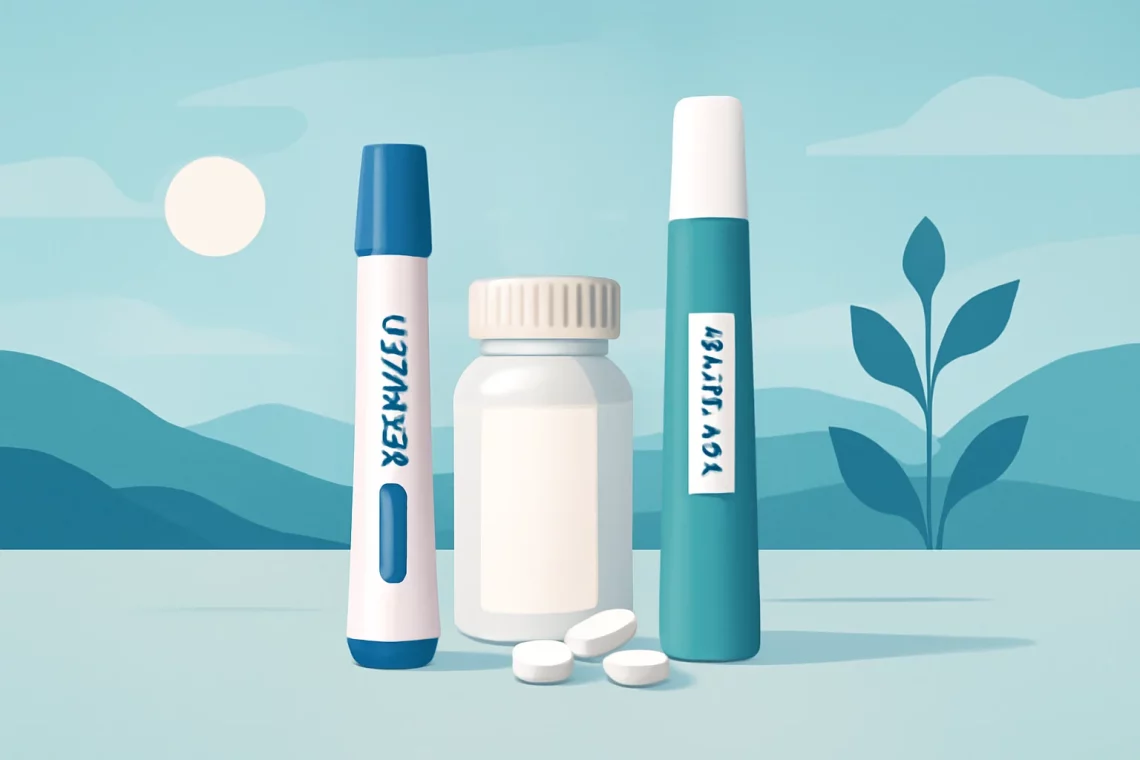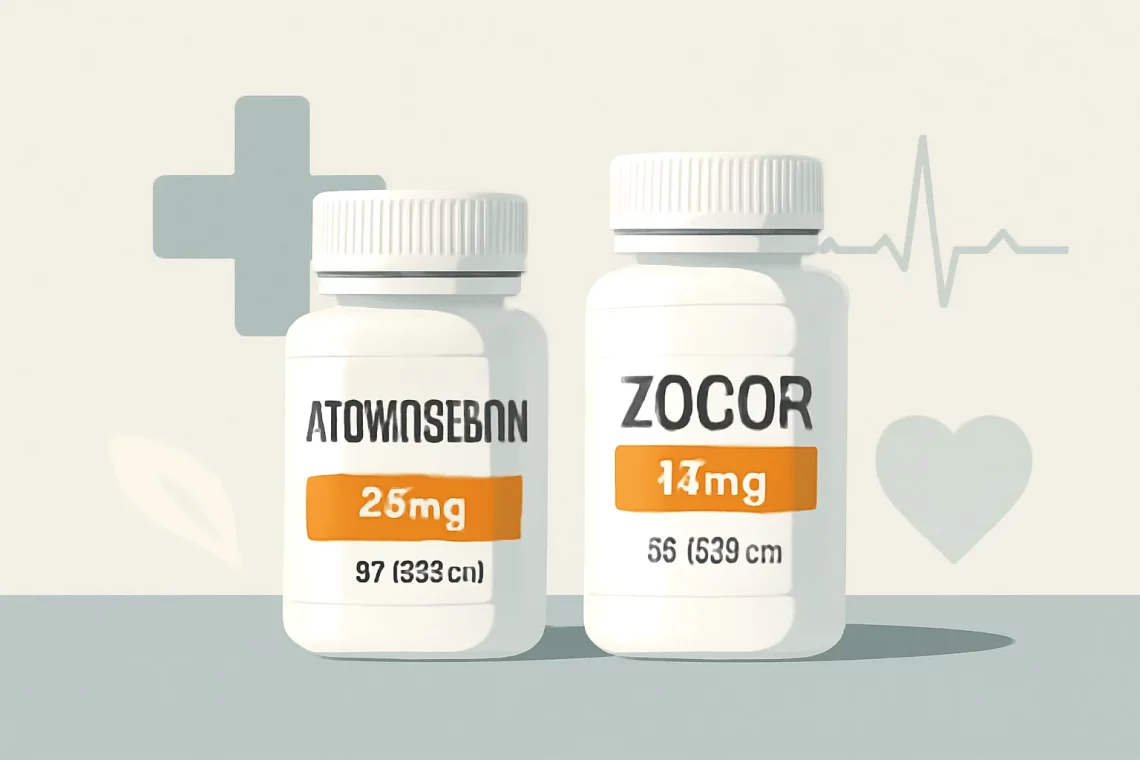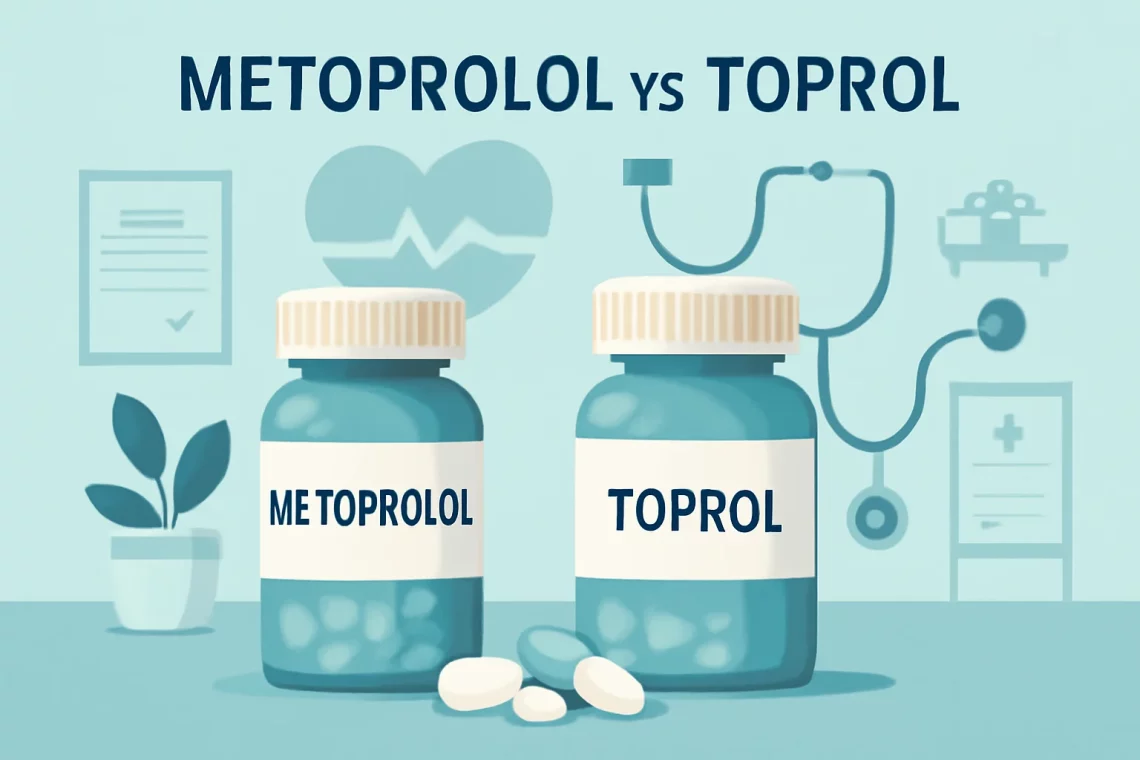-
Zepbound vs Trulicity: A Comprehensive Comparison of Diabetes Medications
In recent years, the management of diabetes has evolved significantly, with the introduction of various medications aimed at improving blood sugar control. Among these medications, Zepbound and Trulicity have emerged as popular choices for patients and healthcare providers. Both drugs belong to the class of glucagon-like peptide-1 (GLP-1) receptor agonists, which have shown effectiveness in managing type 2 diabetes. The increasing prevalence of diabetes worldwide has led to a surge in interest surrounding these medications, as individuals seek effective and efficient solutions to maintain their health and well-being. Understanding the differences and similarities between Zepbound and Trulicity can help patients and caregivers make informed decisions about their diabetes management options.…
-
Atorvastatin vs Zocor: Which Cholesterol Medication is Right for You?
Atorvastatin and Zocor are two medications commonly prescribed to manage cholesterol levels and reduce the risk of cardiovascular diseases. Both belong to a class of drugs known as statins, which work by inhibiting the enzyme HMG-CoA reductase, crucial for cholesterol production in the liver. High cholesterol levels can lead to atherosclerosis, a condition where arteries become narrowed and hardened, increasing the risk of heart attacks and strokes. The importance of managing cholesterol levels has become a focal point in preventive healthcare. With cardiovascular diseases being among the leading causes of death worldwide, understanding the options available for cholesterol management is essential. Statins, including atorvastatin and Zocor, have proven effective in…
-
Naltrexone vs Campral: Choosing the Right Treatment for Alcohol Dependence
The journey toward recovery from substance use disorders can be challenging, often requiring a multifaceted approach that combines therapy, support, and sometimes medication. Among the various options available to individuals seeking to overcome alcohol dependence, two medications, Naltrexone and Campral, have emerged as popular choices. While both aim to assist individuals in their recovery journeys, their mechanisms of action, side effects, and suitability for different individuals can vary significantly. Understanding these medications is crucial for individuals, families, and healthcare providers involved in the treatment of alcohol use disorder. As awareness of addiction and its treatment continues to grow, so too does the need for informed decisions regarding the use of…
-
Clonazepam vs Diazepam: Which Medication is Right for You?
Clonazepam and diazepam are two medications that fall under the category of benzodiazepines, a class of drugs commonly prescribed for their sedative, anxiolytic, and muscle-relaxant properties. These medications have been widely used in the treatment of various conditions, including anxiety disorders, panic attacks, and seizures. Despite their similarities, clonazepam and diazepam have distinct differences in their pharmacological profiles, indications, and side effects, which can influence the choice of one over the other in clinical practice. Understanding these differences is essential for patients and healthcare professionals alike, as it can guide effective treatment strategies tailored to individual needs. Both medications work by enhancing the effects of a neurotransmitter called gamma-aminobutyric acid…
-
Losartan vs Valsartan: Choosing the Right Medication for Hypertension
Losartan and Valsartan are two commonly prescribed medications that belong to a class of drugs known as angiotensin receptor blockers (ARBs). These medications are primarily used to manage hypertension and heart failure, providing significant benefits for those affected by these conditions. With rising rates of cardiovascular diseases globally, understanding the role and differences between these medications is increasingly important for patients and healthcare providers alike. Both Losartan and Valsartan function by blocking the action of a hormone called angiotensin II, which causes blood vessels to constrict. This action leads to lower blood pressure and reduced workload on the heart. Despite their similar mechanisms, there are nuances in their pharmacological profiles,…
-
Loratadine vs Diphenhydramine: Which Antihistamine Is Right for You?
Loratadine and diphenhydramine are two commonly used antihistamines that play a crucial role in managing allergy symptoms. They are both effective in alleviating conditions such as hay fever, allergic rhinitis, and other allergic reactions. While they serve a similar purpose, the way they work and their side effects can vary significantly, making it essential for users to understand the differences between them. Antihistamines function by blocking the action of histamine, a substance in the body that causes allergic symptoms. However, there are two primary categories of antihistamines: first-generation and second-generation. Diphenhydramine falls into the first-generation category, while loratadine is classified as a second-generation antihistamine. This distinction is essential for users,…
-
Metoprolol vs Toprol: Understanding the Key Differences and Uses
Metoprolol and Toprol are two terms often used interchangeably in the world of cardiovascular medications. These medications belong to a class known as beta-blockers, which are primarily used to manage high blood pressure, heart rhythm disorders, and other heart-related conditions. Despite their similarities, it is crucial to understand that Metoprolol and Toprol, while closely related, are not exactly the same. Their differences can significantly impact how they are prescribed and how they function in the body. Beta-blockers like Metoprolol work by blocking the effects of adrenaline on the heart and blood vessels. This action leads to a decrease in heart rate and blood pressure, making it easier for the heart…
-
Xanax vs Valium: Understanding the Differences and Uses
The use of benzodiazepines has become increasingly prevalent in modern medicine, particularly for the treatment of anxiety and panic disorders. Two of the most commonly prescribed medications in this category are Xanax and Valium. Both of these drugs are known for their effectiveness in alleviating symptoms of anxiety, but they possess unique properties that set them apart. As the understanding of mental health continues to evolve, it is essential to examine these medications closely to determine which may be more appropriate for various conditions. In the realm of mental health treatment, the importance of medication cannot be overstated. Patients often seek relief from overwhelming feelings of anxiety, panic, or stress,…
-
Loratadine vs Fexofenadine: Which Antihistamine is Right for You?
Allergies are a common concern for many individuals, affecting millions worldwide. As the seasons change, pollen and other allergens become prevalent, leading to a surge in allergic reactions. Symptoms such as sneezing, nasal congestion, and itchy eyes can significantly impact daily life. To combat these discomforts, various antihistamines are available, each with its unique properties and effectiveness. Among the most popular options are loratadine and fexofenadine, both of which are second-generation antihistamines. These medications are designed to alleviate allergy symptoms without causing excessive drowsiness, a common side effect associated with first-generation antihistamines. Understanding the differences between loratadine and fexofenadine is essential for individuals seeking relief from allergies. While both medications…
-
Azithromycin vs Biaxin: Key Differences and Similarities Explained
Azithromycin and Biaxin are two widely recognized antibiotics that play crucial roles in the treatment of various bacterial infections. Both medications are part of the macrolide class of antibiotics, which are known for their effectiveness in combating a range of pathogens. Azithromycin is often praised for its broad spectrum of activity and convenient dosing regimen, while Biaxin, or clarithromycin, is noted for its potency and effectiveness in treating specific infections. Understanding the differences, uses, and potential side effects of these two medications is essential for both healthcare professionals and patients alike. As antibiotic resistance continues to rise, the selection of the appropriate antibiotic becomes increasingly important. This not only helps…






































